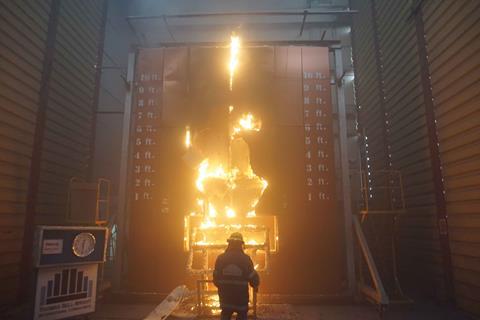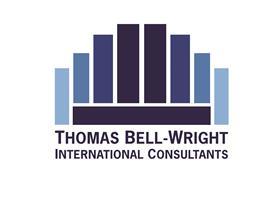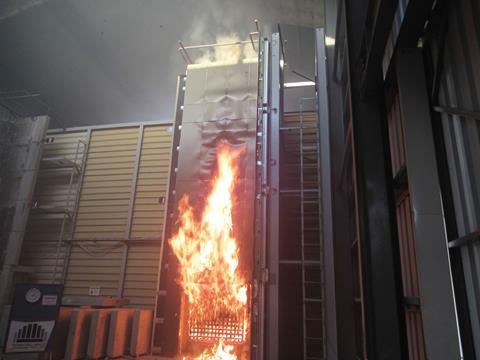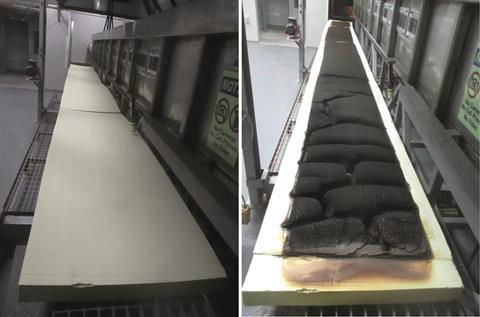This CPD, sponsored by Thomas Bell-Wright International Consultants, explains the correct tools to use passive fire protection methods to ensure fire-safe facade systems

CPD CREDITS: 60 MINUTES
DEADLINE: 25 OCTOBER 2019
For more information about Assemble Media Group’s CPD distance-learning programme, click here


Introduction
The global construction industry has been forced to confront the issue of fire testing cladding as reports of fires in building cladding have increased, notably the fatal disaster at Grenfell Tower in west London two years ago. It has been said that the spate of cladding fires around the world during the last decade are the result of cladding that uses a new material – aluminium composite – becoming widely used in cladding as an architectural finish in high-rise buildings.
Newer generations of aluminium composite material cladding (ACM) include a fire retardant in the plastic core. However, this ups cost, hence the need for fire testing to ensure the correct amount of fire retardent has been used. As the cladding process is so repetitive – every detail is copied over every centimetre of the building – it is highly susceptible to flaws. At the same time, remediation is extremely difficult, expensive and complex because it means removing the whole system and replacing it.
Testing and test reports have been used for decades across industries to demonstrate the capability of organisations to produce products or materials that meet given requirements.
This CPD will look at the use of passive fire protection methods to ensure fire-safe facade systems.

What is ACM cladding?
ACM cladding consists of a plastic core sandwiched between two thin (~0.4mm) skins of aluminium to make a board usually either 4mm or 6mm thick. The outer skin material comes in a huge coil complete with a coloured coating finish of the purchaser’s choice.
A V-shaped groove is routed around the perimeter about 2cm or 3cm in, which removes all the material down to the outer skin. The edges can then be easily folded up to make a tray with stiff edges without damaging the coating. Reinforcing can be fixed with an adhesive to support the middle and avoid “oil-canning”, and clips attached with pop rivets for fixing to the building. It can be architecturally pleasing, inexpensive and easy to work. However, while ACM is not that easy to ignite, once on fire it burns rapidly, with flames working downwards as aggressively as they burn upwards.
Fire tests for building products
Fire testing is broadly divided into three groups: resistance-to-fire testing is for building elements such as walls or doors, which comprise the fire separation between defined compartments in a building, such as separate offices or hotel rooms. The test specimen is built into a frame, which is placed on the open side of a full-scale test furnace and exposed to the standard time/temperature curve for a period of time. The maximum time achieved puts the element into a rating band such as 30 minutes or 60 minutes. The same test equipment and rationale are applied to protective coatings for structural steel elements, which can also be tested under load. These coatings, called intumescent since they expand with heat, increasing volume and reducing density, protect the element for a period and achieve a rating.
The second group of tests is reaction-to-fire tests, which are mainly for materials rather than systems and are typically tested in much smaller equipment, although there is a wider range of tests. Typical properties important to facade engineers designing fire-safe facades are the conditions under which a material can catch fire (called ignitability); the amount of heat (energy) released when material burns or combusts (known as calorific value or heat release ratio); the rate at which the flame travels across the surface of the material once it catches fire (known as flame spread) and physical reactions to fire such as smoke and droplets released.
The third group of tests is really a subset of reaction-to-fire and is called fire propagation. In these tests, for which there are several different standards around the world, a full-size or slightly scaled down two-storey specimen is erected on a backing system. An opening is built to represent a window and a fire is ignited on the room side of that opening. The test specimen includes all the materials combined according to the facade design, and it passes the test if none of the failure criteria are met.
What is a test report?
A test report is a snapshot of the behaviour of specific properties of a given sample of a material or system. The results are of the sample tested – it should not be automatically considered representative without measures to confirm that it is.
A valid and usable test report must capture the following:
1. Accreditation or authorisation of the lab for conducting the test. Bodies such as the United Kingdom Accreditation Service (UKAS), or the International Accreditation Service (IAS) from the US, provide laboratory accreditation. The lab is required to follow a uniform quality management system and to demonstrate its competence in conducting the tests within its scope.
These requirements are set out in the international standard ISO 17025, standard for the general requirements for the competence of testing and calibration laboratories. This is comparable to ISO 9001 for manufacturers. Accreditation bodies belong to umbrella organisations such as International Laboratory Accreditation Cooperation (ILAC), which have a system of mutual recognition for their members.
An acceptable accreditation body will therefore be a signatory to its umbrella organisation’s “mutual recognition agreement” (MRA) or “multi-lateral agreement” (MLA). A laboratory testing report may not be generally accepted if the laboratory does not carry accreditation for the tests with an accreditation body which is a signatory to the MRA/MLA.
2. It should have a comprehensive description of what exactly was tested, together with the trade name, the name of the sponsor of the test and the location of the factory where it was manufactured. The value of the test report to others is diminished if this information is not recorded, even though it is provided by the client and is unverified.
3. The date of the test report and the version of the test standard against which the test has been performed must be stated. Reports of specimens tested a long time ago – several years, for example – or according to an older version of the test standard, should be approached with caution.
A test report does not, on its own, provide much assurance that what arrives on site is the same as what was tested – for that, you need “certification”, which will be discussed later in this CPD.

Critical reaction to fire properties
Some commonly used test methods for ignitability are:
- ASTM D1929, which determines the flash ignition temperature and spontaneous ignition temperature of plastics using a hot air furnace.
- BS EN ISO 11925-2 quantifies the ignitability of building products using direct impingement of flame (a small flame, for example the size of a cigarette lighter for 15 to 30 seconds).
- EN ISO 1182 uses a cylindrical furnace tube at 750°C to measure temperatures of the specimen continuously for rise and/or visible flames.
- BS 476-12 also tests for ignitability by direct impingement of flame.
Calorific value and heat release ratio
The chemical composition of a material dictates the amount of latent energy the material has. This differs from ignitability, which remains the same irrespective of the volume or quantity of material.
- BS EN ISO 1716 uses a bomb calorimeter to determine the gross heat of combustion or calorific value (meaning the amount of energy the material has and can release when it ignites) as well as properties such as smoke production and mass loss rate.
- ISO 5660-1 measures the oxygen consumption to calculate the heat release ratio. This can be thought of as the rate at which this material will release the latent energy it contains, which can either contribute to the fire or help ignite adjacent material.

Spread of flame, smoke and other behaviour
Depending on the composition and distribution of potentially flammable ingredients of a material, the rate at which the flame will spread on its surface and the smoke it can produce will vary.
- The Steiner tunnel test (ASTM E84, UL 723) uses standard American red oak and calcium silicate board as reference materials. A sample measuring 7.2m x 60cm forms the ceiling of the tunnel and a flame generated at one end is drawn along by an air stream. The rate at which the flame front progresses during the 10-minute test gives a rate of spread of flame and an optical determination of smoke density provides a smoke development index.
- BS 476: Part six also measures the flame spread index but differently. BS EN 13823, known as the single burning item test, has a sample that is L-shaped and about 1m high. This test measures total heat release, fire growth rate, lateral flame spread and quantifies other properties of the smoke and whether any droplets are produced.
Certification
So how does the buyer or end-user of a product or material get assurance that what they are purchasing is the same as that which was tested? The answer is certification.
Certification relies on a third-party organisation, a certification body (CB) that is accredited to ISO 17065 standard for conformity assessment for bodies certifying products, processes and services.
The certification process comprises the following steps:
Step 1: The CB’s auditor visits the manufacturing site and verifies that the facility has a quality management system, such as ISO 9001. A facility cannot be expected to turn out a consistent product without the controls that a proper quality management system provides.
The auditor then witnesses the production process of the product/material that will be tested. The process and raw materials are mapped and a sample or samples from the production line are identified for testing and marked by the auditor. The auditor typically leaves the manufacturer with a number of “corrective actions” to implement into their systems or procedures as a precedent to the CB issuing its certification.
Step 2: The marked samples are transported to the test lab and tested. The test report is produced and will include the elements discussed previously.
Step 3: Following a successful test and resolution of the corrective actions, the CB issues the certification documentation, lists the product on its website and authorises the manufacturer to use the CB’s mark on the product, its packaging or promotional materials. Typical CB marks include the UL symbol seen on several electronic products and the “Kitemark” of the British Standards Institute. Purchasers of any product that claims certification should check its certification status on the listing website before proceeding.
Step 4: As part of the certification and continued listing, a CB regularly audits the production and quality control processes at the manufacturing location several times a year. This provides a high level of assurance that the products shipped subsequently under the certification and listing are manufactured in the same way, and with the same materials, as the samples that were tested.
Once the material’s fire properties have been established, facade engineers will carefully design the cladding systems for given projects. Each project would have several different details and one or more could have a fire propagation risk. These are then mocked up and tested according to NFPA 285 or BS 8414 – Fire propagation testing. As described above, these are full-scale tests, with samples measuring between 6m and 8m in height respectively, for the two standards mentioned. With every element of the system included, such test results give validation the design philosophy and confirmation of fire risk mitigation.

Inspection during construction
Now there is a certified product with traceability that can be checked at the construction site and approved cladding drawings with proofs of mock-up tests. However, there are further stages of inspection.
Several parts of the cladding system design could be installed incorrectly or in a way that is inconsistent with how the sample materials were tested or reviewed. This is where regular on-site inspection of the cladding work by a facade specialist engineer comes in. It may be the most onerous part of the complete exercise but arguably the most critical.

Project site in sight
Professionals inspecting the installation of facade systems need to be qualified and capable of distinguishing errors of drawing versus site and understanding workmanship practises. ISO 17020 is the standard for conformity assessment for the operation of various types of bodies performing inspection. Accreditation under this standard in the field of cladding inspection is vital, and in many places, mandatory.
Third-party quality assurance
Global standards ISO 17020, ISO 17025 and ISO 17065 provide the basis for independent and reliable third-party testing, inspection and certification bodies. Such bodies are grouped together in the testing, inspection and certification (TIC) industry, which is growing in importance in building construction, particularly in cladding and curtain walling.
Manufacturers utilise the services of accredited independent certification bodies (via certification marks and listing) to demonstrate and ensure the reliability of their production. This helps create a high degree of confidence among stakeholders that what is installed is the same as what was tested.
Project managers utilise the services of accredited independent inspection bodies to ensure that cladding systems and curtain walls are installed in a way that conforms to the installation that was tested.

How to take this module
Assemble Media Group’s CPD distance-learning programme is open to anyone seeking to develop their knowledge and skills. Each module also offers members of professional institutions an opportunity to earn between 30 and 90 minutes of credits towards their annual CPD requirement.
This article is accredited by the CPD Certification Service. To earn CPD credits, read the article and then click the link below to complete your details and answer the questions. You will receive your results instantly, and if all the questions are correctly answered, you will be able to download your CPD certificate straight away.
CPD CREDITS: 60 MINUTES
DEADLINE: 25 OCTOBER 2019
Privacy policy
Information you supply to Assemble Media Group Limited may be used for publication and also to provide you with information about our products or services in the form of direct marketing by email, telephone, fax or post. Information may also be made available to third parties. Assemble Media Group Limited may send updates about Building CPD and other relevant Assemble Media Group Limited products and services. By providing your email address you consent to being contact by email, telephone, fax or post by Assemble Media Group Limited or other third parties. If at any time you no longer wish to receive anything from Assemble Media Group Limited or to have your data made available to third parties, contact the Data Protection Coordinator at building@building.co.uk. View our full privacy policy here




























No comments yet